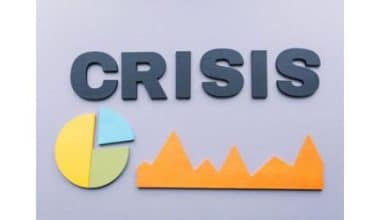Are you interested in knowing how to create your crisis communication plan template, marketing communication plan template, strategic communication plan template, or other types of communication plan templates? A well-structured communication plan is essential for any organization looking to enhance its messaging and ensure clarity among stakeholders. Whether you’re preparing for a crisis or aiming to improve your overall communication strategy, having the right templates can significantly streamline the process.
In this article, I’m going to teach you how to create your communication plan, discuss the types of communication plan templates available, and provide downloadable templates for you to edit. Additionally, I’ll highlight the benefits of using a communication plan in your business.
Key Points
- A communication plan defines your messaging goals, ensuring that everyone in the organization understands the objectives.
- Audience Engagement: Identifying your target audiences helps tailor messages effectively, enhancing engagement and responsiveness.
- Crisis Preparedness: A crisis communication plan template prepares your organization to respond swiftly and effectively during emergencies.
- Consistency Across Channels: Communication plan templates promote consistency in messaging across various channels, reinforcing your brand identity.
What Is a Communication Plan?
A communications plan is a structured strategy that companies use to manage the flow of information to various stakeholders. This plan helps businesses convey important news, product information, and marketing messages while also preparing them to respond to potential crises in an organized and timely manner. Often, the creation of a communications plan is handled by public relations or marketing teams, and it is closely aligned with the development of products or services.
Companies use communications plans in two key ways: externally, to communicate with customers and the public, and internally, to share information within the organization. External plans are critical for activities such as product launches or crisis management, while internal plans help larger corporations keep employees informed, especially when they operate across multiple locations.
One of the defining characteristics of a communications plan is its proactive nature. Even for crisis management, the goal is to anticipate potential issues and outline responses in advance, allowing for effective control of the narrative should an incident occur.
How Do You Write a Communications Plan?
Creating a comprehensive communication plan is essential for organizations aiming to communicate effectively with their audiences. A well-structured plan not only ensures clarity in messaging but also prepares the organization to respond effectively to various situations, including crises. Here’s a detailed guide to writing a communication plan, with eight key components that are integral to its success:
#1. Define Your Communication Objectives
Before diving into any plan, it is crucial to clearly define the objectives of your communication. Consider what you want to achieve through your communication efforts. This might involve increasing brand awareness, launching a new product, or managing a crisis. For example, a marketing communication plan template should include specific sales targets, such as increasing sales by 15% within a specific timeframe. Clear objectives will provide direction for your messaging and allow you to measure success effectively.
#2. Understand Your Target Audience
Knowing your target audience is vital for effective communication. Identify who you are trying to reach and gather insights into their preferences, demographics, and behaviors. Understanding your audience will allow you to tailor your messages, making them more engaging and relevant.
For instance, if you are drafting a crisis communication plan template, the audience might include not just customers but also investors and the media. This understanding helps ensure that your communication resonates with the right people.
#3. Craft Your Core Messages
After identifying your objectives and audience, the next step is to develop your core messages. These messages should be clear, concise, and aligned with your overall goals. They need to address the specific issues your audience cares about.
When creating a strategic communication plan template, ensure that your messaging is adaptable for different scenarios, such as product launches or crisis management. Your messages should be consistent across all channels to reinforce your brand identity.
#4. Select Appropriate Communication Channels
Choosing the right channels to disseminate your messages is critical. This decision depends on where your audience is most active. Common channels include social media, email newsletters, press releases, and company blogs.
For instance, if you’re communicating a product launch, using social media platforms where your target demographic engages most can enhance visibility. In a crisis communication plan template, timely and appropriate channel selection can be pivotal to ensure your message reaches stakeholders quickly and effectively.
#5. Develop an Action Plan
An action plan outlines the steps you will take to implement your communication strategies. It should specify who is responsible for each task, the resources needed, and the timeline for execution. This section is vital for maintaining organization and accountability.
For instance, if your plan includes a new marketing campaign, detail the specific actions the marketing team will take, including content creation, scheduling, and distribution. Having a clear action plan ensures that everyone involved understands their roles and responsibilities.
#6. Set a Timeline
Timing is critical in communication, particularly during crisis situations or product launches. Establish a timeline that outlines when key messages will be released and what events or milestones will occur.
This not only helps keep the team on track but also ensures that the communication is timely and relevant. For example, if you’re preparing for a product launch, create a timeline that builds anticipation leading up to the launch date. A well-timed communication can significantly enhance audience engagement.
#7. Gather Feedback and Adjust
Once your communication plan is implemented, it’s essential to collect feedback and analyze the effectiveness of your efforts. Use surveys, analytics tools, and stakeholder input to assess how well your messages were received and whether they achieved the desired objectives. This evaluation is crucial for continuous improvement. For instance, after executing a crisis communication plan template, review how stakeholders responded and adjust your messaging strategies for future situations accordingly.
#8. Conduct Regular Reviews
Communication is not a one-time effort; it requires ongoing attention. Regularly review and revise your communication plan to ensure it remains relevant and effective. This process might involve updating objectives based on market changes, refining messaging based on audience feedback, or adjusting communication channels as trends evolve.
By committing to regular reviews, your organization can adapt to changing circumstances and continue to communicate effectively with its audiences.
Types of Communication Plan Template
There are different types of communication plan templates designed to address various scenarios, ranging from daily internal communications to crisis management. Here are the key types of strategic communication plans and templates:
#1. Strategic Communication Plan Template
A strategic communication plan template is an essential tool that helps organizations maintain stable and consistent communication with their internal and external audiences. These templates include critical components like executive summaries, objectives, situational analysis, and audience demographics, providing a structured approach to crafting long-term communication strategies.
The Strategic Communication Plan Template is optimized for adaptability, meaning it allows for easy updates based on shifting business needs or market conditions. With features like customizable sections for goal setting, key messaging frameworks, and audience segmentation, they enable organizations to adjust their strategies while maintaining alignment with their core objectives.
#2. Crisis Communication Plan Template
Every organization will eventually face some form of crisis, whether it be operational, reputational, or related to external factors like natural disasters or financial downturns. The Crisis Communication Plan Template is designed to help organizations navigate such challenges by outlining clear procedures for managing information flow and communication during emergencies.
These templates often include crisis communication policies, a command center structure, activation hierarchies, and roles for media liaisons. Crisis Communication Plan Template involves ensuring that they are both flexible and responsive. They should include predefined messaging tailored to different crisis scenarios, allowing organizations to act swiftly while maintaining clear, consistent communication.
#3. Marketing Communication Plan Template
The marketing communication plan template is designed to ensure that all marketing activities, campaigns, and messaging are consistent and aligned with a company’s overall brand strategy. These templates include sections for goals, SWOT analysis (strengths, weaknesses, opportunities, and threats), target audience, and timelines.
A marketing communication plan template means integrating tools for tracking performance, such as KPIs, and incorporating feedback loops for continuous improvement. By using a marketing communication plan template, businesses can streamline their messaging and ensure cohesive communication with their target audiences across different platforms.
#4. Internal Communication Plan Templates
Internal communication is vital for keeping teams informed, aligned, and motivated. Internal Communication Plan Templates help organizations formalize their communication processes within the workplace. These templates focus on ensuring smooth communication between departments, team members, and leadership, addressing key aspects like goals, stakeholders, and implementation timelines.
Additionally, internal communication plan templates should facilitate tracking and monitoring of internal engagement, ensuring that messages are reaching the intended audience and that there is clarity within the organization.
#5. Project Management Communication Plan Templates
For effective project execution, communication is essential. Project Management Communication Plan Templates are designed to clarify roles, responsibilities, and timelines for all stakeholders involved in a project. These templates typically include sections for key messaging, deliverables, stakeholder roles, and communication channels.
Optimized templates provide transparency across the team, ensuring that everyone knows what needs to be done, by whom, and when. They also feature tools for real-time collaboration, such as integration with project management platforms, making them an invaluable resource for keeping projects on track and ensuring clear communication throughout the project’s lifecycle.
#6. Event Communication Plan Templates
Planning an event involves many moving parts, and event communication plan templates help ensure that communication around the event is clear, timely, and well-coordinated. These templates include timelines, key messaging for guests and stakeholders, and channels for information dissemination. They should also include options for real-time updates, ensuring that any changes to the event plan are communicated efficiently to all stakeholders.
Benefits of Communication Plan

Below are the benefits of implementing the communication plan strategy:
#1. Organizing Communication Flow
A well-structured communication plan is essential for organizing the flow of information within an organization. It consolidates various messages into a clear and coherent format, making it easier to determine which updates are most pertinent to the audience. By prioritizing information, teams can efficiently distribute the most critical messages first, ensuring that stakeholders and consumers receive timely and relevant updates.
This organized approach not only enhances collaboration among team members but also keeps external parties informed about important organizational changes. A marketing communication plan template can help in structuring this flow to align with marketing goals.
#2. Distinguishing Your Message from Others
It is crucial to differentiate your message from competitors. A communication plan helps in crafting strategic conversations that resonate with the target audience. By employing strong communication techniques, organizations can ensure their messages stand out, enabling consumers to recall key details better.
This differentiation is vital for maintaining brand recognition and can significantly impact how the audience perceives the organization compared to others. A well-executed strategic communication plan template can effectively combat information overload, allowing the crafted message to capture and sustain audience attention.
#3. Encouraging the Audience to Act
Another compelling reason for implementing a communication plan is to motivate the audience to take specific actions beneficial to the business. This is particularly significant in marketing contexts, where the goal may be to encourage consumers to engage with promotional content, subscribe to services, or purchase products.
A communication plan allows organizations to identify and craft messages that resonate with the audience, thereby increasing the likelihood of desired behaviors. This strategic approach to communication can drive engagement and foster loyalty, ultimately contributing to the brand’s success. Incorporating a crisis communication plan template can also prepare organizations to respond effectively when the need arises.
#4. Enhancing Internal Communication
A communication plan facilitates effective internal communication by establishing clear channels and protocols for information sharing among team members. This ensures that everyone is on the same page, reducing misunderstandings and promoting a collaborative work environment.
By defining roles and responsibilities within the communication framework, organizations can streamline decision-making processes and enhance overall productivity. A well-implemented strategic communication plan template serves as a guide for how employees should communicate with one another, fostering a culture of openness and transparency.
#5. Improving Crisis Management
Having a communication plan is vital for managing crises effectively. A well-prepared crisis communication plan template allows organizations to respond promptly and coherently during challenging situations. By outlining clear protocols for communication during a crisis, businesses can minimize the impact on their reputation and maintain stakeholder trust.
This preparation ensures that team members know how to convey critical messages to the public and internal audiences, reducing confusion and misinformation during turbulent times.
What Are the Five Components of a Project Communication Plan?
Key components of a project communication plan include identifying stakeholders, defining communication goals and strategies, determining communication channels, establishing a communication schedule, and assigning communication responsibilities.
What Are the 5 Steps in Communication Planning?
To do that, follow these five simple (and sequential) steps:
- Clarify: The first, and arguably most important, element of effective communication is clarifying why you’re sending the message you’re planning in the first place.
- Consider
- Create
- Choose
- convey
What Is an Example of a Communication Plan?
Establishing a logical and consistent flow that guides the audience through a well-defined communication path is essential. For example, an awareness-raising campaign could start with educational posts on social media, then interactive webinars to actively engage the target audience, and finally, an on-site event.
Conclusion
In conclusion, a well-crafted communication plan is vital for any organization aiming to engage its audience successfully. By incorporating these eight detailed points and utilizing specific templates like a marketing communication plan template, crisis communication plan template, and strategic communication plan template, you can enhance your communication efforts and ensure your messaging is impactful, relevant, and timely.
Related Articles
- 8 Customizable Brand Strategy Templates + How to Create an Effective Strategy
- 10 Best Ideas for New Website Announcements: Emails, Templates, and Tips
- The Essentials of Effective Integrated Marketing Campaign + Templates
- Guide to Crafting An Effective Implementation Plan For Business Success






